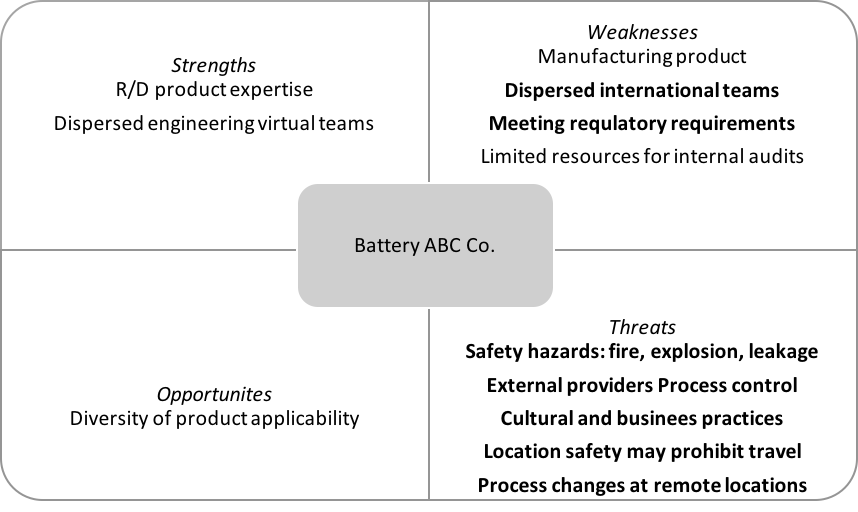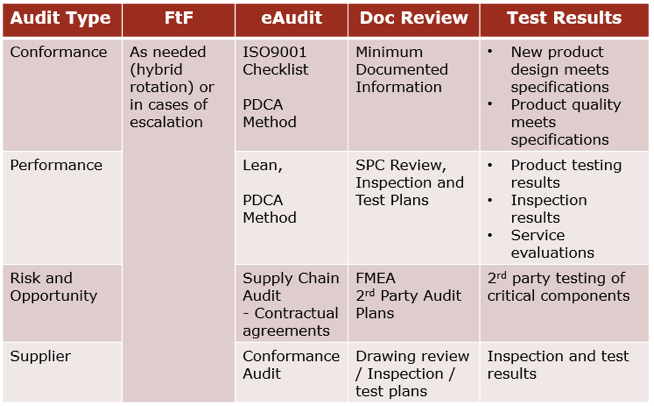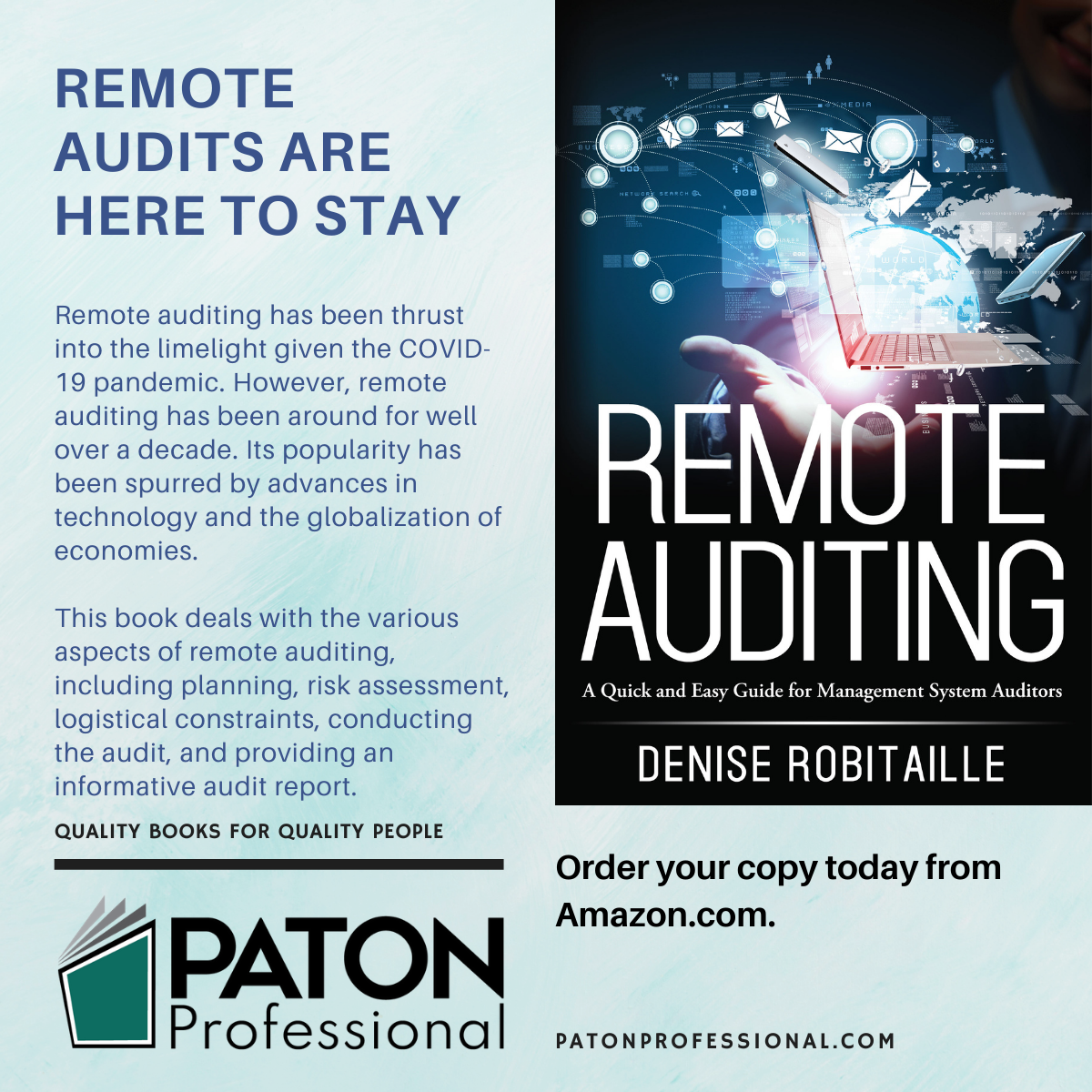By Shauna Wilson
Since COVID-19, the world of auditing has been turned upside down, especially for auditors and registrars that have been reluctant to accept other viable methods for auditing. But, in fact, companies for years have been limited to an “on site” audit to determine if their quality management system (QMS) is adequate even if the audit method did not coincide with operations. A better examination of the context of the organization may lead to other review methods to determine the adequacy of the QMS.
In this article, I will examine virtual auditing validation criteria, the use of the context of the organization, and conclude by reviewing other opportunities gained using virtual or electronic auditing (eAuditing) methods.
Let’s begin with a definition: An eAudit is a systematic, independent, and documented process to obtain evidence through electronic means to determine the extent of conformity to the audit criteria.
To validate an audit method, it’s necessary to define the process used in the auditing method. Like onsite audits, audits conducted virtually should have defined processes for audit preparation, opening meetings requirements, audit interviewing and mobile device use for the operational visual review, and closing meeting requirements. Appropriate forms and job aids are controlled, trained auditors, and the auditor’s performance qualified on the audit method. If the virtual audit process is not defined, or the auditors are not qualified, then the audit process cannot be validated. It’s the same as onsite audits.
As we are still learning about ISO 9001:2015 requirements for context of the organization, taking the time to understand and articulate organization issues should give insight to the necessary QMS review methods. For example, products that contain batteries often make headlines. We can no longer carry a Samsung Note 7 on an airplane or fly with a motorized skateboard. In the following fictional story, a review of how to apply context of the organization is captured in a strengths-weaknesses-threats-opportunities (SWOT) analysis.
Battery ABC Co. is a research-and-development laboratory that designs and manufactures lithium batteries in a small but powerful format, enabling longer charges and lighter cell phones, tablets, and watches. Battery ABC Co. relies on external providers to manufacture its batteries. Based on the following SWOT analysis, what internal audit plan does the company’s management team need to mitigate both internal and external issues to meet the needs and requirements of all parties?

In this scenario, management should consider a hybrid audit model. This would incorporate multiple verification methods: onsite audits, eAudits, desk audits (document review), and product testing to understand the QMS. An audit plan should include design and development, the release of product at remote locations, and external provider reviews to ensure manufacturing processes are managed appropriately. External provider reviews could include line yields and defect Pareto charts, process eAudits, and product testing by a third-party lab to ensure the battery meets product specifications and regulatory requirements.
A hybrid audit model approach is necessary for organizations of this nature to completely verify internal and external issues and that interested parties’ needs and requirements are met. The following chart shows an example of a hybrid audit management plan.

eAuditing is an efficient and effective audit method; auditing remote locations and external providers to ensure process controls are in place, reviewing product-related issues real time, and enhancing understanding among all interested parties. Companies that invest in eAuditing allow remote locations to learn from one another. They gain a better understanding of remote processes and can leverage and standardize common processes across distant locations.
About the Author
Shauna Wilson is president at Amazon Consulting Inc. She is a performance management consultant who designs efficient and effective quality systems. Wilson is a Certus-certified auditor and leading expert in remote auditing. She holds a master’s degree in performance management technologies/instructional design. Wilson wrote InterneTeaming.com: Tools to Create High Performance Remote Teams and co-authored eAuditing Fundamentals: Virtual Communication and Remote Auditing and has been featured in Quality Progress and ASTD’s InfoLine. Wilson is the Section Chair at ASQ’s Portland, Oregon Section 607 and currently serves as the U.S. TAG expert for PC/TAG 302 ISO 19011 auditing management systems.
Copyright 2021 by Shauna Wilson. All rights reserved.






